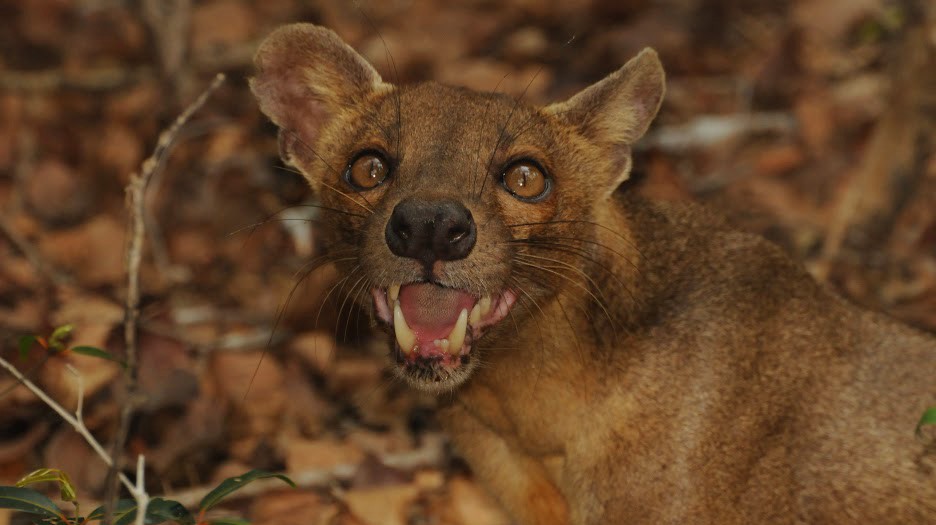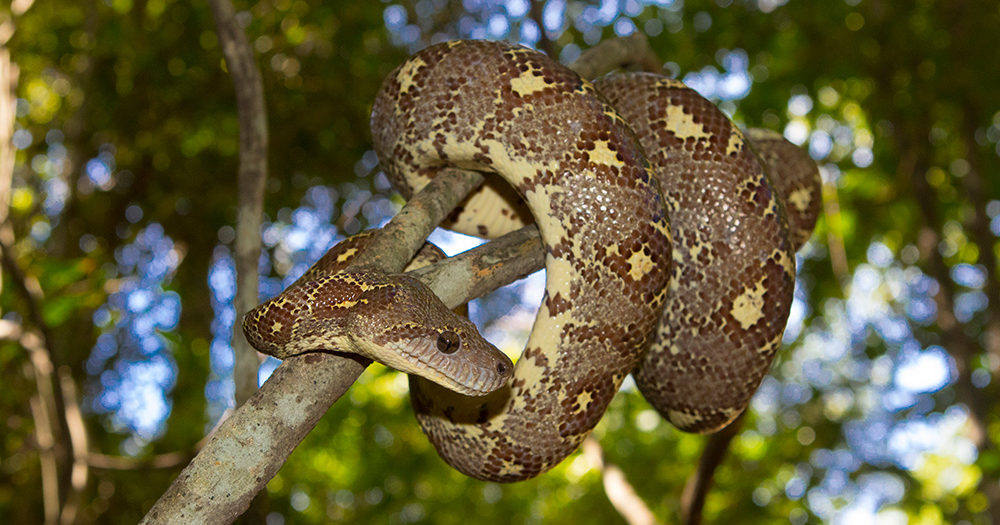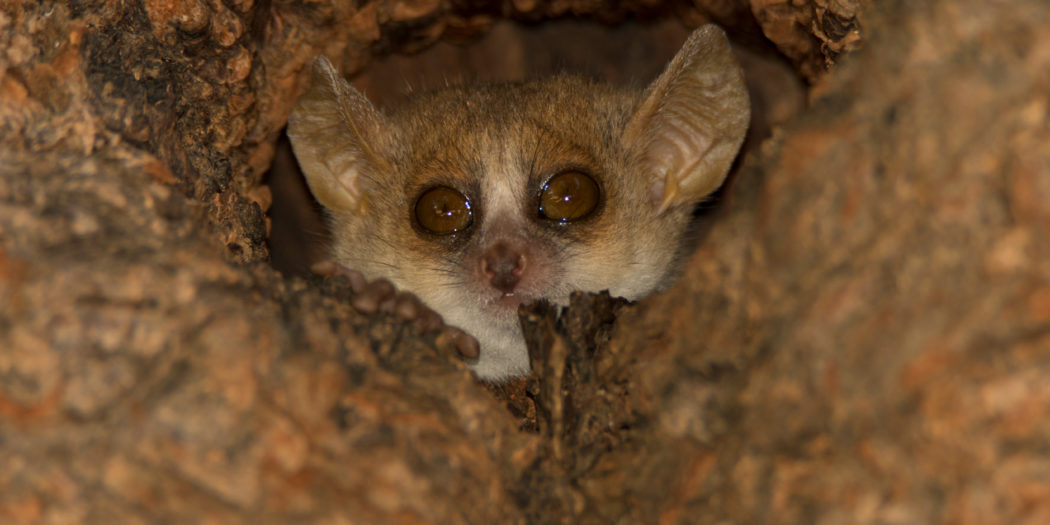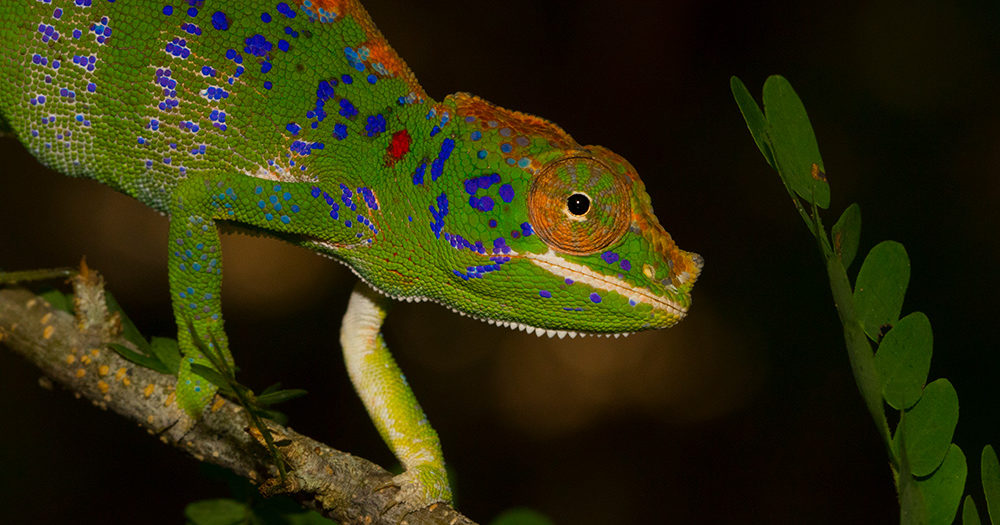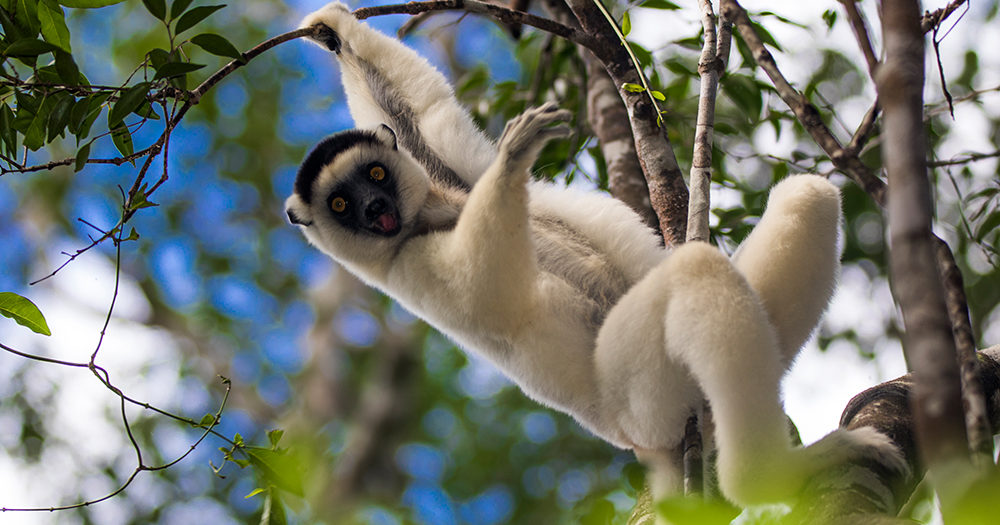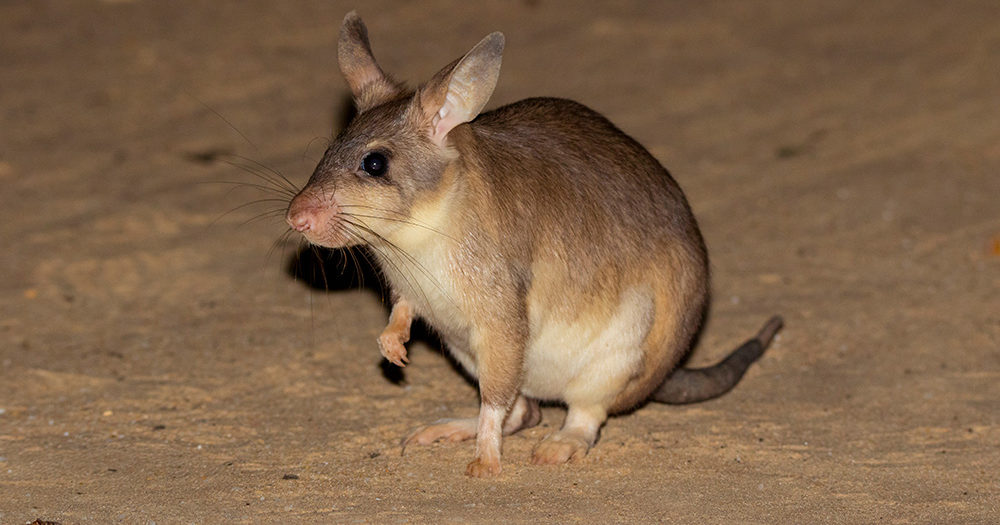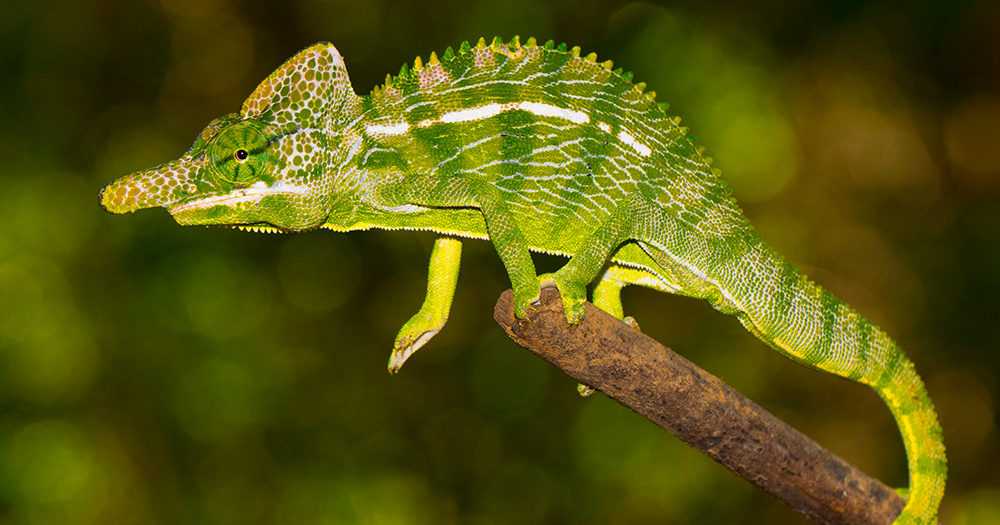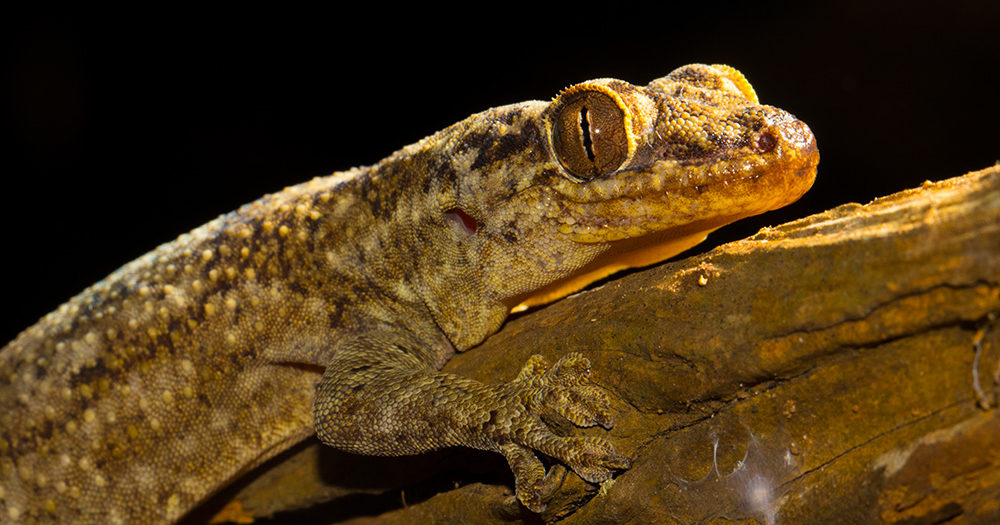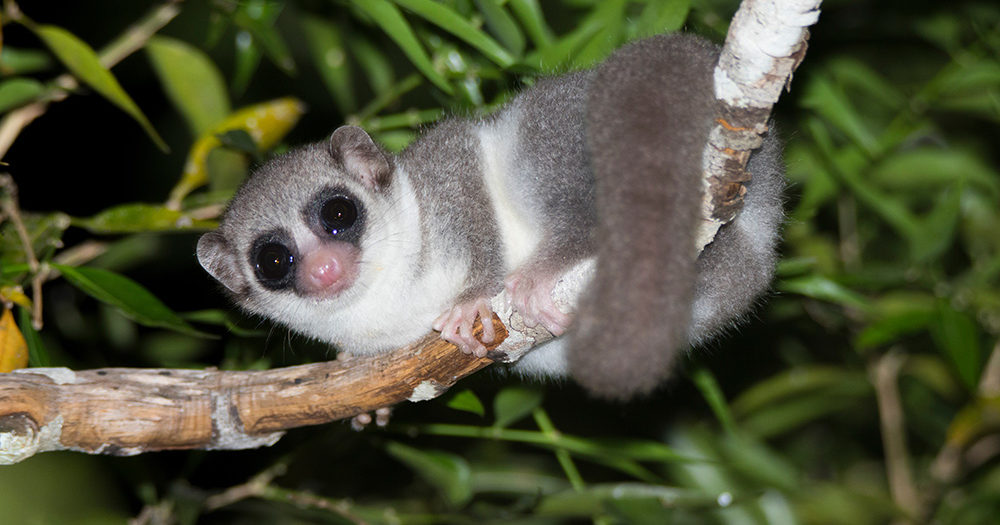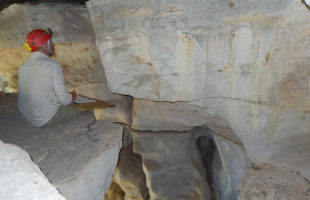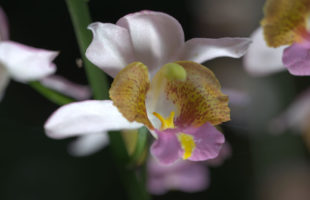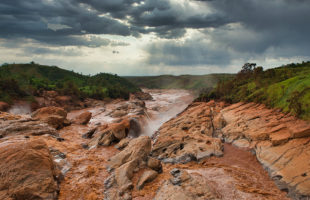Kirindy:
The word Kirindy means as much as „dense forest with wild animals“. Due to the more south located national park Kirindy-Mitea, the reserve is also known as “Kirindy Nord”. From former times it has the name “La forêt des Suisses”, the Swiss people’s forest.
Location:
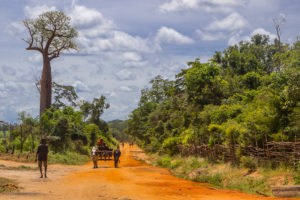
Kirindy Forest is located in western Madagascar in Menabe region. From the capital of Madagascar, Antananarivo, you have to drive 700 km. You need a 4×4 for the drive and should plan two, better three days for one way. First, you drive the well-paved RN7 from Tana to Antsirabe into the southern highlands, where you change to smaller RN34.
The RN34 leads via the city Miandrivazo along Tsiribinha river to Morondava. The drive from Antsirabe to Morondava (almost 500 km) takes at least one day. From the large city Morondava, which is directly at the Channel of Mozambique, you have to head on in northeastern direction 55 km offroad on a red, dusty slope (RN8). It leads you along Baobab Alley to Kirindy (approximately a two hours drive). As an alternative to a rented car, you can use the much more dangerous Taxibrousse. But they will let you out 5 km in front of the camp, and you will have to walk those kilometers with your luggage in the hot sand – we do not recommend that.
Information about the reserve:
Since the 1980ies, the Swiss company Centre de Formation Professionelle Forestière, short CFPF, owns the concession of the forest of Kirindy. The area of about 125 km² has been using for sustainable forest management since then. Only some years ago, the CFPF administration department has been renamed into Centre de Formation d’Etudes et de Recherches en Environnement et Foresterie (CNFREF).
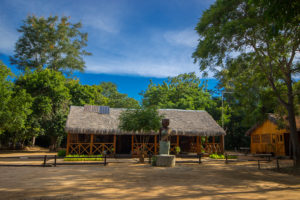
Since 1993, scientists of the German Primate Center in Göttingen have been visiting Kirindy on a regular base. In 1996, they build the first research station which is still part of the camp today. Thus they laid the foundation for the long-lasting protection of the dry forest and first ecotourism. In 2010, the association Longon’i Kirindy (friends of Kirindy) was founded. It helped a village north of Kirindy, Beroboka, with donations to plant trees, sink wells, and supported a local school. Unfortunately, this association is no longer active.
A part of Kirindy’s dry forest is divided into grid squares with roads and paths as straight as a dart in between. Local guides offer tours from short journeys to long-lasting animal searches including lunch. All paths are flat and relatively easy to walk. Even nocturnals can be done in several parts of the reserve.
Climate:
The climate is extremely warm with temperatures over 30°C all year round. Only in the middle of the year, night temperatures may drop to 15°C. Sun cream, several liters of water, and long clothes are essential equipment here. The rainy season is usually short in Kirindy, and the rest of the year is very dry.
Infrastructure:
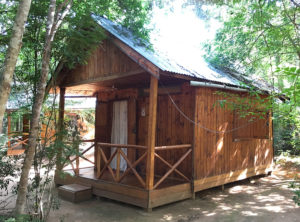
Due to its cooperation with the German Primate Center, Kirindy has a good infrastructure. The campground has 13 rustic bungalows, each has a shower and toilet. Most times, running water is available – if not, the staff brings you water in canisters from the camp’s well. Solar panels produce electricity during the daytime, which is available at night only. A small good restaurant is part of the camp. For biologists and other scientists, there is a simple building with cheaper sleeping accommodations, the dormitory (reservation in advance necessary). If you prefer to sleep in a hotel, you will find several accommodations for any price class in Morondava, 55 km away. Just seven kilometers from the reserve, the Relais de Kirindy Hotel with bungalows and pool has recently been opened. Thanks to nearby baobab alley, tourists are common in this area.
Fauna & Flora:
Kirindy is a meeting point for scientists all around the globe. The unbelievable dense forest is home to eight lemur species, 23 additional mammals, 50 reptile species, and even 15 amphibians. Bird watchers have a lot to do with around 70 different species, too. And even botanically, Kirindy is gratifying: More than 200 plant species have adapted to the dry environment.
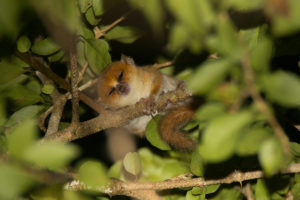
Among most travelers, Kirindy is famous for the Fossa (Cryptoprocta ferox). Madagascar’s largest predator has its mating season in November. This is the best time to spot Fossas here! Today, two large males visit the camp from time to time. A lot smaller but even more special is Madame Berthes’s mouse lemur (Microcebus berthae), the smallest lemur on Earth. You will be lucky spotting this tiny guy between the branches in the night – but you will need really good eyes! A night walk is also the best opportunity to watch other nocturnal forest inhabitants such as the fat-tailed dwarf lemur (Cheirogaleus medius) or gray mouse lemurs (Microcebus murinus). In the night, another strange creature loves to visit the camp: The Malagasy Jumping Rat (Hypogeomys antimena) which is threatened by extinction and only occurs in Kirindy. During the day, it is time for the large lemurs: Verreaux’ Sifakas (Propithecus verreauxi) and Red-fronted Lemurs (Eulemur rufifrons) skillfully leap between the trees. Some groups know human visitors and let you come close until few meters.
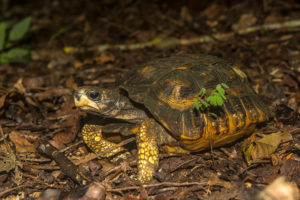
Even among reptiles, Kirindy has unique specialties: The shortest-living chameleon worldwide, Furcifer labordi, inhabits the dry forest. It survives only three to five months on average which is just enough for mating and oviposition. Threatened by extinction and only living in region Menabe is also the flat-backed spider tortoise (Pyxis planicauda) or Kapidolo. And if you watch really close, you may discover the leaf-nosed snake (Langaha alluadi).
Thanks to international research, Kirindy is the only protected site oft he area with a widely intact forest. And a visit to this gorgeous forest world is more than rewarding!
-
Website des Reservatszur Zeit leider offline - Deutsches Primatenzentrum
- Reptiles & Amphibians of Kirindy (Short guide der Tropical Biology Association)
 MADAMAGAZINE Your Magazine about Madagascar
MADAMAGAZINE Your Magazine about Madagascar
